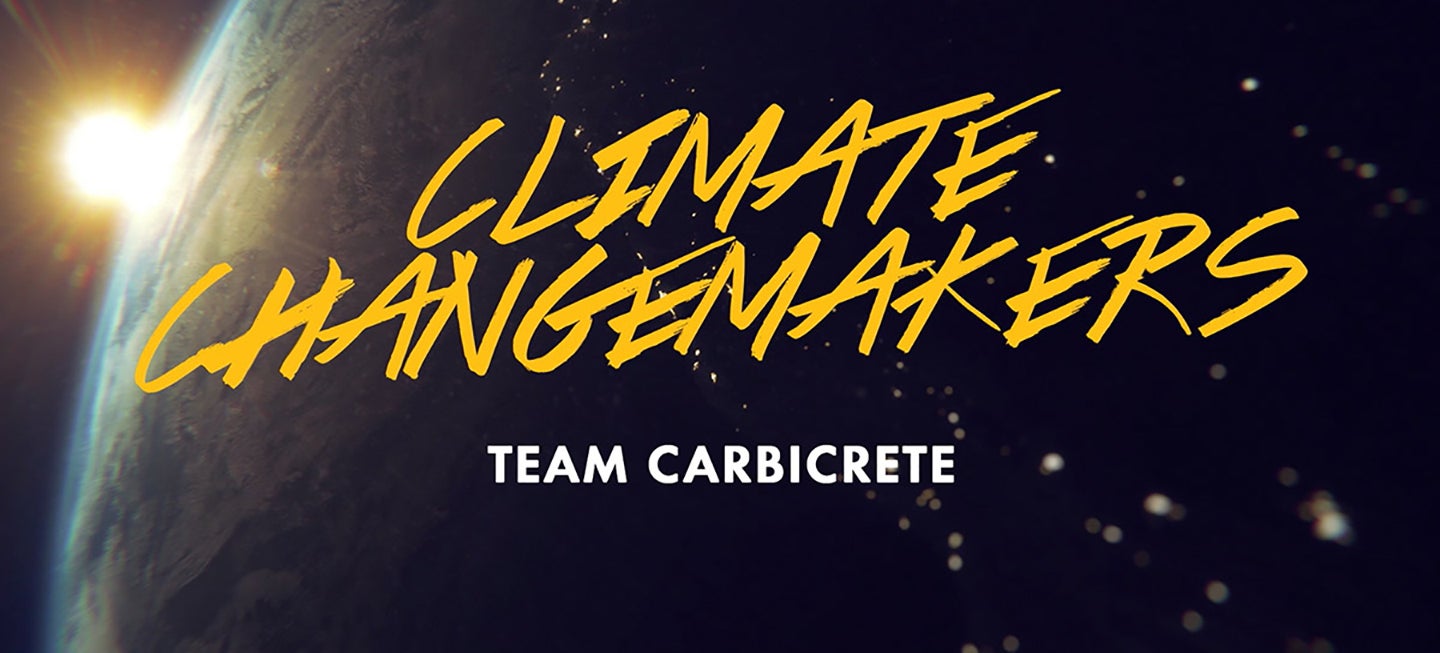Climate Changemakers is a series highlighting the extraordinary people on a $20 million quest to save the planet through carbon conversion. This guest post is written Yuri Mytko of Team Carbicrete, from Montréal, Québec. Carbicrete is one of 27 semi-finalist teams competing in the $20M NRG COSIA Carbon XPRIZE.
Concrete is everywhere. Our cities are built with it, and it’s the most abundant substance on earth after water.
But concrete poses an environmental problem. It is made with cement—the production of which accounts for 5% of the world's CO2 emissions.
The demand for concrete remains high, and with the commitments that both the Canadian and American governments have made to infrastructure spending in the coming years, it will likely increase.
The solution we offer to the industry’s cement problem involves producing concrete in a way that not only eliminates the need for cement, but also captures CO2 — instead of releasing it into the atmosphere.
We’ve developed a process in which cement is replaced as the binding ingredient in concrete with ground steel slag, and where heat-and-steam curing is replaced by curing with carbon dioxide.
Steel slag is a by-product of the steel-refining process. Because it is generally considered to be waste, the bulk of it is destined for landfills and is far less expensive to procure than cement.
But because of its chemical composition, steel slag is CO2-reactive. We leverage this property using a process called carbonation activation. CO2 is injected into the wet concrete to give it its strength. The strength gain is attributed to the formation of calcium-silicate-hydrates coupled with calcium carbonates through the carbon activation of calcium silicates.
The cement required to produce a standard size concrete block, often referred to as a “cinder block”, results in 2kg of CO2 emissions. Our process avoids that. Additionally, we capture 1kg of CO2 in every block during the curing process.
The result is a product that meets all construction industry standards, and is more durable than its cement-based counterpart, with better resistance to freeze and thaw cycles.
Our technology was developed at McGill University in Montreal by a team of engineering researchers, one of whom is a co-founder of Carbicrete. All four of our principals are McGill grads.
Our involvement in the NRG COSIA Carbon XPRIZE has made us look at ways that we can use flue gas as our CO2 source — increasing the amount of recycled content in our product and further reducing its cost.
Meeting the other XPRIZE semi-finalists reimagining CO2 has been tremendously inspiring. Seeing how many exciting ideas are being developed around using CO2 as a valuable ingredient in different products, it’s exciting to know we’re a part of a growing movement.
With our process, we hope to contribute to making the construction industry function with a smaller environmental footprint, while ensuring our customers are working with a safe, strong and economical product.
